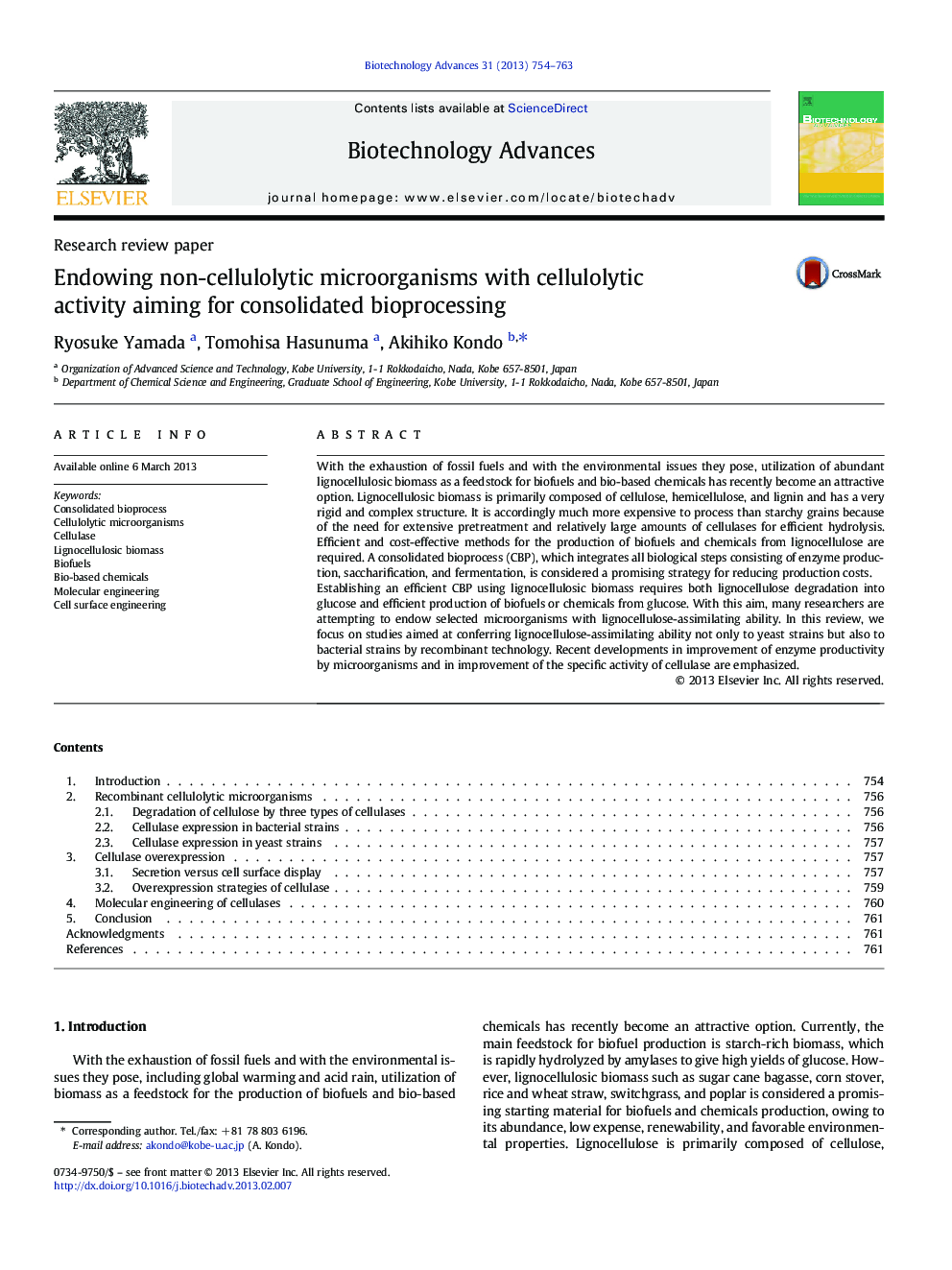| Article ID | Journal | Published Year | Pages | File Type |
|---|---|---|---|---|
| 14339 | Biotechnology Advances | 2013 | 10 Pages |
With the exhaustion of fossil fuels and with the environmental issues they pose, utilization of abundant lignocellulosic biomass as a feedstock for biofuels and bio-based chemicals has recently become an attractive option. Lignocellulosic biomass is primarily composed of cellulose, hemicellulose, and lignin and has a very rigid and complex structure. It is accordingly much more expensive to process than starchy grains because of the need for extensive pretreatment and relatively large amounts of cellulases for efficient hydrolysis. Efficient and cost-effective methods for the production of biofuels and chemicals from lignocellulose are required. A consolidated bioprocess (CBP), which integrates all biological steps consisting of enzyme production, saccharification, and fermentation, is considered a promising strategy for reducing production costs.Establishing an efficient CBP using lignocellulosic biomass requires both lignocellulose degradation into glucose and efficient production of biofuels or chemicals from glucose. With this aim, many researchers are attempting to endow selected microorganisms with lignocellulose-assimilating ability. In this review, we focus on studies aimed at conferring lignocellulose-assimilating ability not only to yeast strains but also to bacterial strains by recombinant technology. Recent developments in improvement of enzyme productivity by microorganisms and in improvement of the specific activity of cellulase are emphasized.
